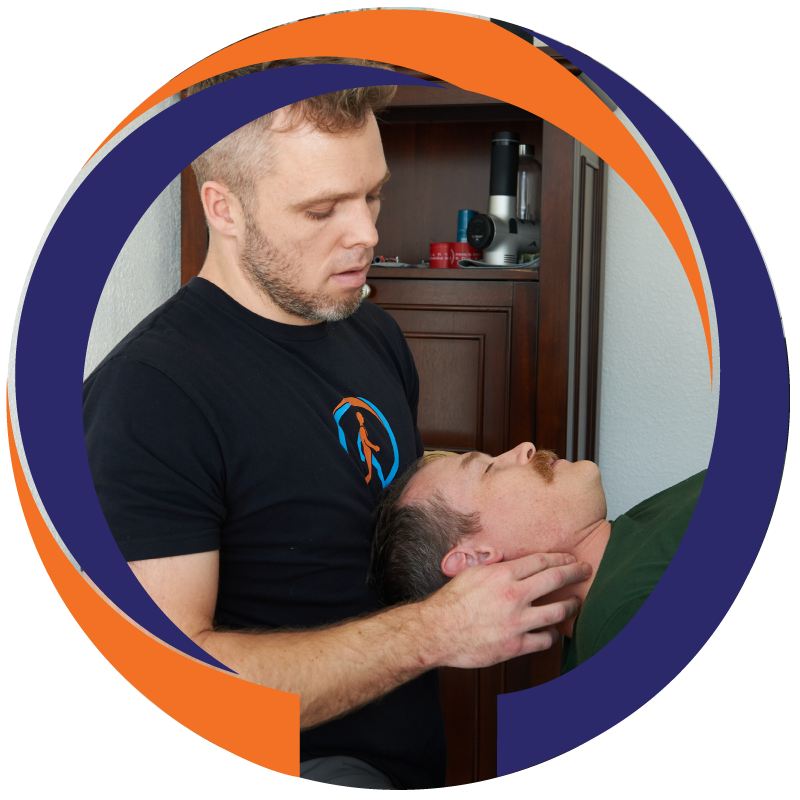The Selective Functional Movement Assessment (SFMA™)
Schedule a free phone consultation
Treat pain last – fix movement first
For the longest time treatment has focused mainly on the site of pain, however the cause of pain is often a completely different location. This phenomenon is known as regional interdependence – one area of the body affecting the function and muscular recruitment of another area of the body.
The first seven movement tests, also known as the “top-tier” – have four possible outcomes in testing, based on two parameters:
- Did the movement pass the standards, yes/no or (functional/dysfunctional)
- Was the movement painful, yes/no or (painful/nonpainful)
The following table displays the four outcomes of the Selective Functional Movement Assessment top-tier:

After running through the top-tier, we have a list of areas that need to be assessed further. Anything that was painful or dysfunctional needs to “broken out” – to use the SFMA lingo.
Breaking Down the Problem
The purpose of these breakouts is to further assess why the movement is painful, or why the range of motion is restricted. This additional assessment will yield the following results for why a movement is painful or dysfunctional:
- Joint Range of Motion Problem (joint that is restricted)
- Tissue Elasticity Problem (tight muscle, nerve, or ligament)
- Stability Problem (inactive muscles or groups of muscles)
- Motor Control Problem (an altered motor program exists)
Upon completion of the breakouts, we essentially have a list of things that are going to need Active Release Technique or a joint mobilization – followed by a list of things that may or may not need Neurokinetic Therapy, Anatomy in Motion – or other forms of motor control reprogramming. First and foremost we must treat mobility – as one of the rules of the Selective Functional Movement Assessment is that.
“Mobility problems trump Stability problems”
After treating the mobility problems using Active Release Techniques – we re-assess through the top-tier and see what problems remain, and then assign specific at-home mobility and stability exercises.
The Selective Functional Movement Assessment – An Engineer’s Diagnostic Method

Three former engineers, Dr. Michael Leahy (founder of Active Release Technique) – Julian Corwin, and Dr. Greg Rose (co-founder of the Selective Functional Movement Assessment)
The SFMA is very much an engineering-like approach to analyzing the body. Identifying problems in categories that are similar, and going through the system step by step. Once the problems are identified – fixing the problems that can have a cascading effect on other systems. This fits perfectly with Active Release Technique, so much so that ART and SFMA teamed up to create a custom course called Active Diagnosis – where the SFMA and ART are blended together. Two days of SFMA followed by two days of applying ART to the SFMA. Julian recently attended this course in Colorado Springs with the founders of ART and SFMA.
Diagnostics are more important than the form of treatment
The founders of SFMA hammer this point home. They believe that the treatment itself (whether trigger point, dry needling, active release technique, fascial stretch therapy, etc) is far less important than proper diagnosis – hence the need for a complete diagnostic map & flow chart (the SFMA). The SFMA ensures that regardless of treatment methodology, at least the correct problems will be worked on. When combined with the most advanced and recognized form of soft-tissue therapy, Active Release Technique – the results are incredibly fast.

Example
Client has shoulder pain, and a history of back pain.
Top Tier SFMA screen reveals the painful movements, and the movements that are non-painful but don’t move well (the green boxes below)

The Selective Functional Movement Assessment uses an engineer’s approach to solving movement problems
The green and yellow boxes represent movements that need further investigation and assessment. Further investigation reveals mobility problems in 4 of the 10 tests, and this is our starting point. The goal with treatment is change all the green and yellow boxes to red boxes (seems counter-intuitive, but red represents movements that are clean and do not need investigation). The Selective Functional Movement Assessment gives us the tools we need to prioritize our work and make it more effective.